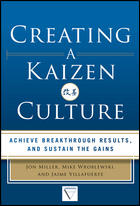One of the most powerful images from nature has also become a powerful metaphor—the wave.
Just in the last few months, we have heard such metaphors used to describe our elections and the COVID-19 pandemic. Leading up to the election, many had dubbed their anticipation of a strong showing by Democratic candidates as a blue wave. The debate on election night was whether that blue wave had materialized. Around the same time, the World was told to brace itself for a third wave of the coronavirus as we approached winter and the Holiday season.
More with the former example than the latter, the metaphor of a wave can be seen as positive or negative, depending on your point of view. But, examining the natural phenomena will help us to determine why the wave is such a popular metaphor, and why some believe it is overused and misused to the point that they battle against it. (You will see the irony of that statement as I continue.)
Waves are relentless. The water crashes on the beach, ebbs back toward the ocean, only to be followed by another wave of crashing water. It never stops.
Waves can be powerful. People caught in one are taught to relax and ride the wave to safety. The most powerful ships attempting to ride against and past a wave will—at the least—find themselves making no forward progress.
Powerful. Relentless. One can see why it’s so often used for its imagery. However, some do object to its use, or perceived misuse. In particular some social movements. For example, feminism.
Author Jo Reger, in the article, “Finding a Place in History,” on jstor.org, argues that dividing the women’s movement in the United States into distinctive timeframes, generations, or waves, is a disservice to the progress of the movement, writing, “Overall, this discursive legacy of “wave” talk encourages feminist generations to view each other through a lens of opposition and difference and influences their view of the viability of the movement.”
This month’s Quality has a wave metaphor of its own. Check out, “What Should Analytics Add to a QMS Solution?”
Enjoy and thanks for reading!








